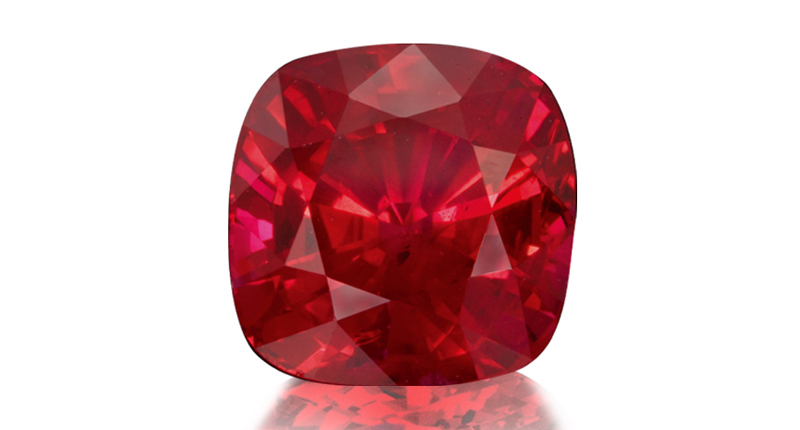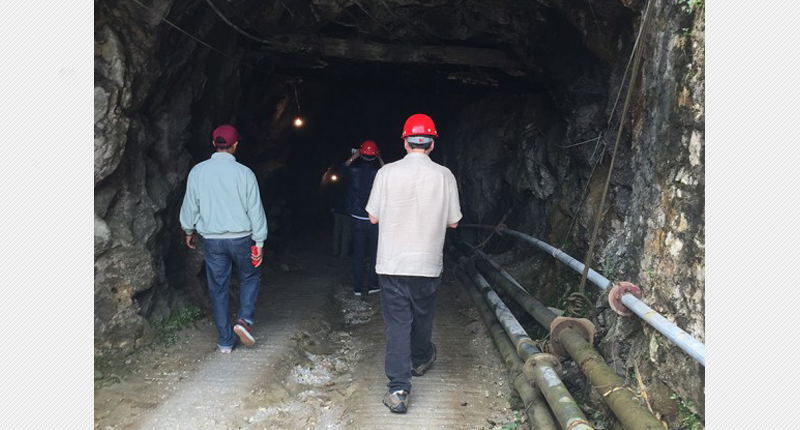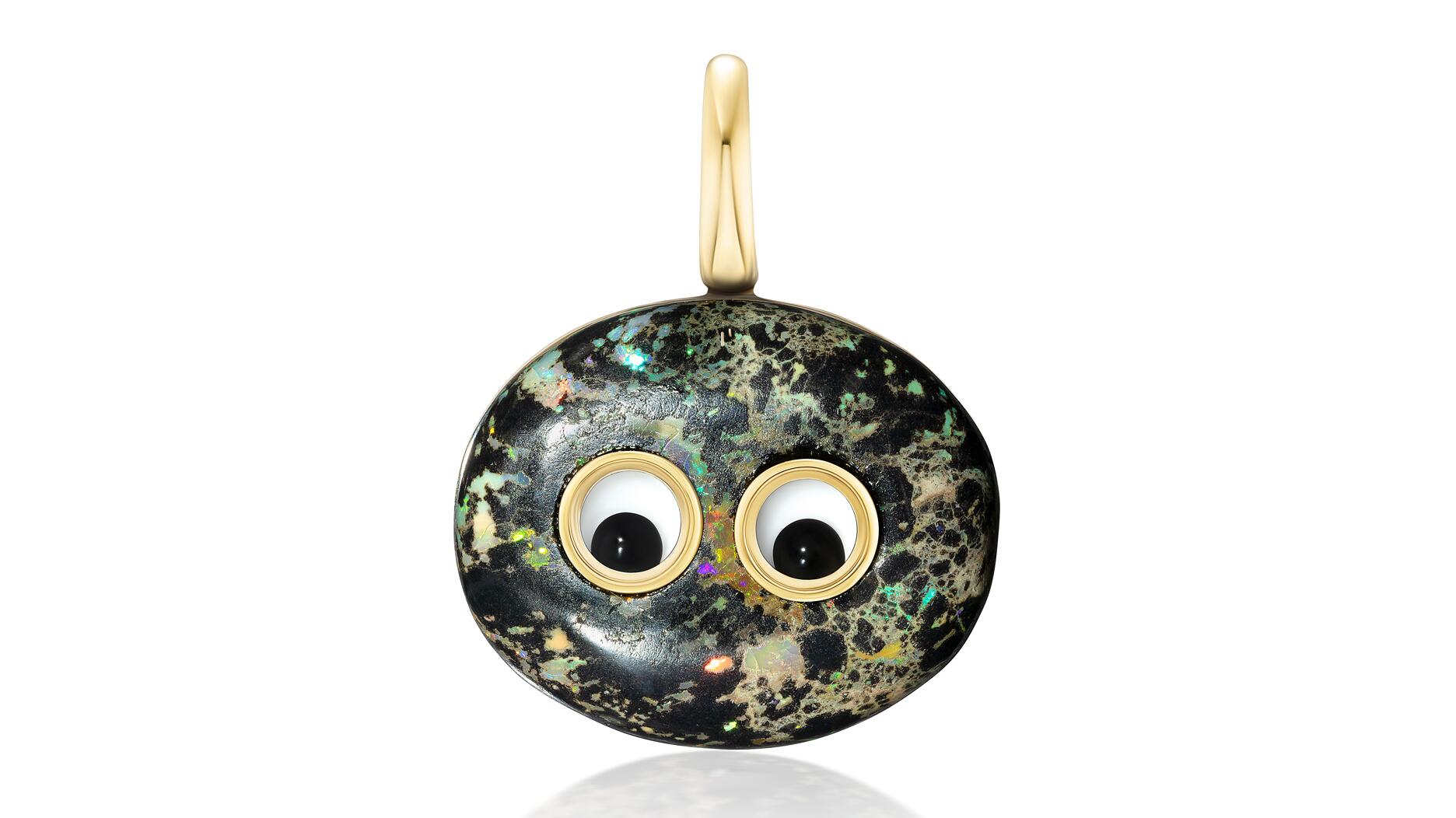The luxury goods company said founder Ippolita Rostagno will remain at the brand’s helm.
5 Things to Know About … Burmese Rubies
Senior Editor Brecken Branstrator details a few interesting facts about the stones, which have been allowed back into the U.S. for the first time in nearly a decade.

For my first “5 Things to Know About…” blog post, I chose these stones because they are topical, with the lift of the remaining sanctions and the likelihood that they will be at the upcoming gems shows in Tucson for the first time in a while.
I, for one, hope I can get my hands on at least a few while I’m out in the desert.
In the meantime, here’s are five facts about the gemstones pulled together with the help of a number of experts.
1. The color of fine Burmese rubies comes a result of two factors. According to “Ruby & Sapphire: A Gemologist’s Guide” by Richard Hughes, the first factor is a combination of the slightly bluish-red body color of the gemstone and the “purer” red fluorescent emission, which work together to give the gemstone its high-intensity color.
The second is the presence of “silk”--tiny inclusions scatter light onto “facets that would otherwise be extinct,” giving the color a softness and greater dispersion across the gem’s face.
And while rubies from other sources also can possess the strong red fluorescence and “silk” comparable to those sourced in Myanmar (formerly known as Burma), it’s the particular combination of “fine color … and facetable material (i.e., internally clean)” that puts Burmese rubies at the top.
2. Burmese rubies are much younger than those from East Africa. This is actually true for all rubies created by the collision of the Indian subcontinent with the Asian continent.
During certain times in history, tectonic movement has resulted in large-scale shifts in the Earth’s surface, resulting in mineral formation and creating regions called orogenic belts. A lot of the finest ruby and sapphire mines fall into such zones, according to Hughes’ book.
The Pan-African orogeny happened about 750 to 450 million years ago, the result of which created gem deposits in Kenya, Tanzania, Mozambique, Madagascar, Sri Lanka and southern India.

Meanwhile, the activity that resulted in the Himalayan region--the Indian subcontinent colliding with the Asian continent--occurred “just” 45 to 5 million years ago. This created ruby and sapphire deposits from Afghanistan and Tajikistan through Pakistan, northern India, Nepal and Myanmar, and onward to China and Vietnam.
Though there currently is no easy way to age-date rubies, Hughes said if we could, it would provide a method for separating Himalayan rubies from those sourced in East Africa and Sri Lanka.
3. There isn’t a great deal of fine quality rubies coming out of Burma right now. Most of the alluvial deposits in the Mogok region are mined out, according to Hughes.
He said the best gemstones come from alluvial deposits because millions of years of weathering naturally removes the impure cracked portions, which leaves behind the purest part of the crystal.
But now, without the alluvial sources, mining increasingly involves hard rock, which has lower yields and keeps production low.
In a blog post published shortly after the ban was officially lifted in October, Omi Gems also noted that even while the ban was in place in the U.S., Burmese rubies still were being exported to other countries but “supply was still not meeting that (high) demand.” This means that there’s no great supply ready to be sent to the U.S., Omi added, and that prices are likely to remain high.
4. Burmese rubies can be compared to fine rubies from Mozambique. While there are a lot of great rubies coming from other sources, it was the discovery of the fine stones from Mozambique in the late 2000s that made a great splash in the gem world, especially given the ban on Burmese material.
Where a strong presence of iron gives many other sources a slightly brownish hue, the material from Mozambique varies in iron content, so its rubies can have a fluorescence and color hues in similar to the classic colors of Burmese rubies, according to gemologist Richard Wise’s “Secrets of the Gem Trade (Second Edition).”
In his book, Wise wrote that he has seen several stones from Mozambique that “rival, in hue, saturation the best Burma has to offer.”
This is good news for the industry given that there’s so little coming out of Myanmar right now, as mentioned before, and as Mozambique rubies today make up a large part of what’s on the market.
Wise, in fact, estimates that about 85 percent of the ruby market today is made up of Mozambican goods.
And as production from Myanmar continues to decrease--assuming the supply of Mozambican rubies remains strong--he price gap between Burmese and African rubies likely will continue to get smaller.

5. The conflict surrounding Burmese rubies has changed. The U.S. declared a “national emergency” with respect to the Burmese military’s rise to power in 1997 and started to impose sanctions on the country a short time later.
The U.S. government then specifically targeted the import of gemstones with the Tom Lantos Block Burmese JADE (Junta’s Anti-Democratic Efforts) Act of 2008, noting the human rights violations of the ruling regime and how it was evading sanctions by concealing gemstone origins to continue their export to the U.S.
Now, as we all know, the remainder of those sanctions have been lifted and rubies can once again be shipped into the country.
In October, leaders from the American Gem Trade Association and Jewelers of America took a trip to Myanmar to discuss trade between countries. While they were there, the group traveled to Mogok, the center of the gemstone trade in Myanmar and traditionally the source for the best rubies, to visit mines and with miners and dealers.
The AGTA has since released a report on its findings and the recommendations the delegation is making to officials of Myanmar.
The report states that “most of Myanmar’s rubies are in conflict-free zones, with the exception of small deposits in Mongshu in Shan State.”
Thus, the safety of workers, mine operators and prospectors, is greater and the “likelihood of indirectly funding armed conflict is less,” the report states.
(This is, of course, looking specifically at rubies in Myanmar. Jade and the problems surrounding it are a separate issue.)
Still, the AGTA hade made recommendations to the country’s officials on how to make their gemstone industry more transparent and develop it--including separating jade from other gemstones when it comes to licenses and regulations--and will continue to help it develop in the future.
The Latest

Laura Burdese, who joined the Italian luxury brand in 2022, will take on the role in July.

Need a gift for the cat lover who has everything? Look no further than our latest Piece of the Week.

How Jewelers of America’s 20 Under 40 are leading to ensure a brighter future for the jewelry industry.

It purchased the “Grosse Pièce,” an ultra-complicated Audemars Piguet pocket watch from the ‘20s, for a record-breaking price at Sotheby’s.


The lab-grown diamond grower now offers custom engagement and fashion jewelry through its Kira Custom Lab Jewelry service.

The boutique is slated to open this week inside Terminal 8, offering pre-owned Rolex watches and more to international travelers.

Roseco’s 704-page catalog showcases new lab-grown diamonds, findings, tools & more—available in print or interactive digital editions.

Sponsored by Digital Monitoring Products

The special-edition egg pendant ingested in a New Zealand jewelry store was recovered after a six-day wait.

Associate Editor Natalie Francisco plays favorites with Piece of the Week, selecting a standout piece of jewelry from each month of 2025.

The “Love and Desire” campaign is inspired by the magic that follows when one’s heart leads the way, said the brand.

Two awardees will receive free tuition for an educational course at the Swiss lab, with flights and lodging included.

Berta de Pablos-Barbier will replace Alexander Lacik at the start of January, two months earlier than expected.

Sotheby’s held its first two jewelry sales at the Breuer building last week, and they totaled nearly $44 million.

Winners will receive free registration and lodging for its fourth annual event in Detroit.

Here are six ideas for making more engaging content for Instagram Reels and TikTok, courtesy of Duvall O’Steen and Jen Cullen Williams.

The honorees include a notable jewelry brand, an industry veteran, and an independent retailer.

Carlos Jose Hernandez and Joshua Zuazo were sentenced to life without the possibility of parole in the 2024 murder of Hussein “Sam” Murray.

Yood will serve alongside Eduard Stefanescu, the sustainability manager for C.Hafner, a precious metals refiner in Germany.

The New Orleans jeweler is also hosting pop-up jewelry boutiques in New York City and Dallas.

Set in a Tiffany & Co. necklace, it sold for $4.2 million, the highest price and price per carat paid for a Paraíba tourmaline at auction.

The jeweler’s “Deep Freeze” display showcases its iconic jewelry designs frozen in a vintage icebox.

Take luxury gifting to new heights this holiday season with the jeweler’s showstopping 12-carat sphene ring.

This year's theme is “Unveiling the Depths of the Ocean.”

In its annual report, Pinterest noted an increase in searches for brooches, heirloom jewelry, and ‘80s luxury.

Starting Jan. 1, customers can request the service for opal, peridot, and demantoid garnet.


























